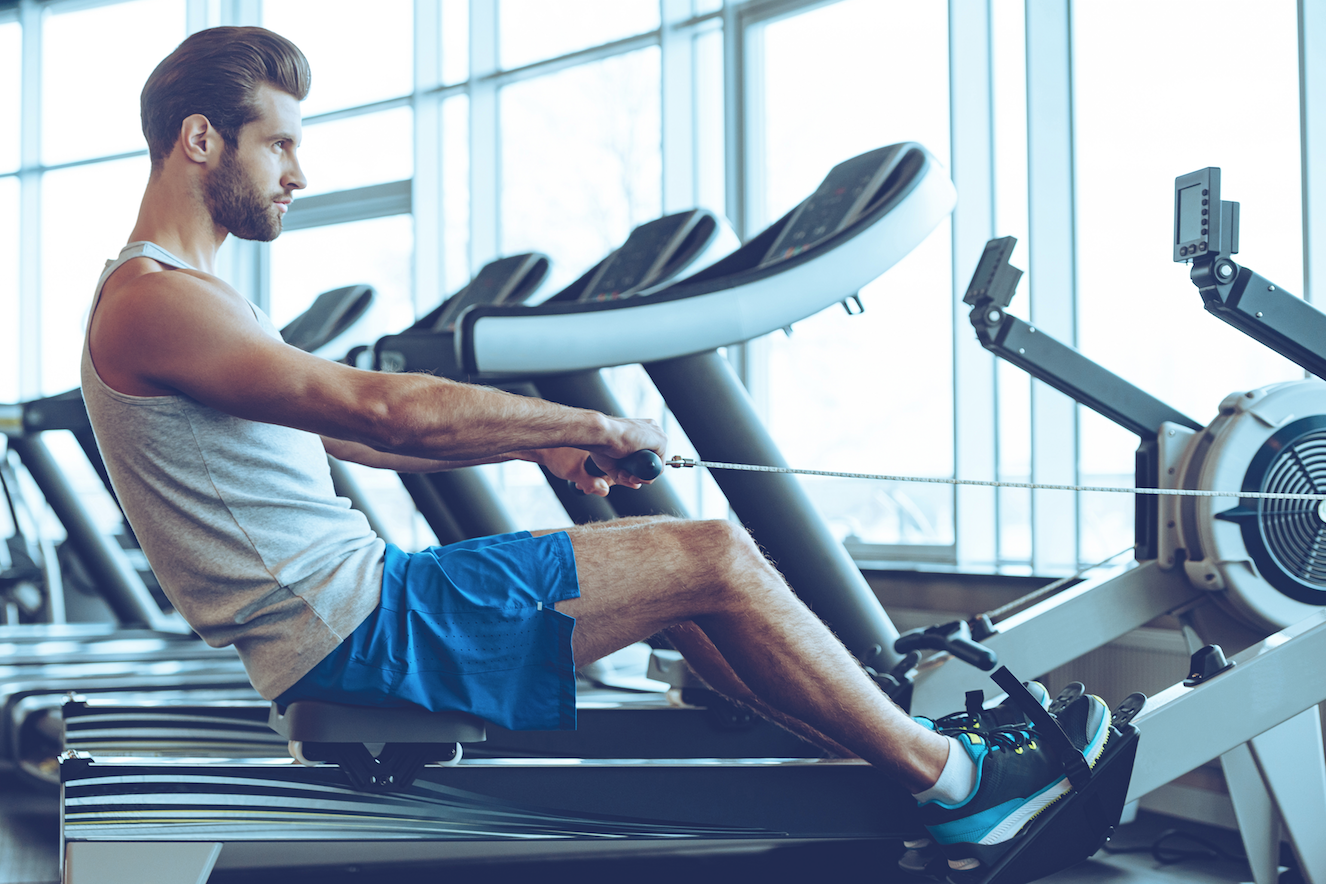After watching a few episodes of “House of Cards” on Netflix and seeing Kevin Spacey get fit by using an old-school wooden rowing machine, you can’t deny you were enticed to hit the gym and try one of the rather unconventional cardio contraptions. Although it isn’t as popular as its counterparts, the treadmill and the elliptical, rowing is just as effective as any other machine. According to Cory Conzemius, director and head coach at Gainesville Area Rowing, it is a sport for anyone to pick up at any point in life. If you are feeling stuck in the monotony of your gym routine, we are here to help you discover a whole new world.
WHO: LOW-IMPACT ACTIVITY FOR THE HIGHLY IMPACTED ATHLETE
As a long distance runner myself, I know the damage that treadmills and sidewalks can do to someone’s physical health. For anyone with bad knees, joints or aches and pains caused by overly impactful machines, rowing is the perfect alternative. A lowimpact workout is easier on the joints — there is no direct, intense contact. Instead, it is a slower and more full-body workout.
A huge benefit of rowing, especially on a machine, according to Conzemius, is the fact that it is a hands-on sport with really low impact for people with injuries. It’s a full body sport without the typical wear and tear of something like a contact sport. He said it works cardiovascular strength, muscle strength and your physical state in general.
WHY: THE BENEFITS OF ROWING
Aside from the fact that rowing involves minimal impact and therefore saves damage to joints and bones, it is also a great way to have a total-body workout and burn just as many calories as you would in a high-impact cardio activity. It requires an equal effort from both your arms and your legs, which can lead to greater benefits from a cardiovascular and physical image standpoint.
Burning at least 11 calories per minute, you even have the opportunity to strengthen muscles that not even a long distance run would build up. While running involves mostly use of the quads, hamstrings and calves, rowing incorporates those muscles as well as the biceps, deltoids and core. It’s the best of both worlds. Another perk? You can even take your new activity outside and row in the sunshine.
WHERE: GYM VS. H2O
While most gym-goers prefer to work out indoors, you should eventually try taking your talents outdoors to get an even more intense workout than the machine can provide. The gym does pose its benefits, said Conzemius, considering the fact that you can get direct feedback from a machine based on how hard you pull and you can be coached one-on-one. The water isn’t for everyone, said Conzemius. In fact it serves more as a secondary stage after you’ve mastered rowing indoors. “On the water, it comes down to technique and balance,” he said. “You have to take everything you’ve learned on a machine and take it outside.”
Whether you choose to be indoors or in the sun, rowing is a great full-body workout, serving just as many benefits as any other workout, and for a bit less bodily damage.
HOW TO: A DUMMY’S GUIDE TO ROWING
According to USRowing, the governing body for the sport of rowing, proper technique is far more complicated than you would assume, as it involves more leg strength than upper body force. The most ideal, effective form involves four phases: catch, drive, finish and recover.
- First and foremost, secure your feet in the stirrups. With a flat back and tight core, extend your arms to grab the handle so that your shoulders are hunched at a 90-degree angle — this is the catch.
- To transition into the drive, simply push back so that your legs are almost straight. Once they are, lean backward to stretch your torso. Once your torso creates a 90-degree angle with the floor, pull the handle to your chest with your arms.
- For the finish there should be bent elbows with the handle around the lower chest area, along with straight legs and a tight core.
- Then the recovery is easy; you simply bend the legs back and slide forward on the rowing machine while the handle goes back into place.
Crew Photo Courtesy of Gainesville Area Rowing

